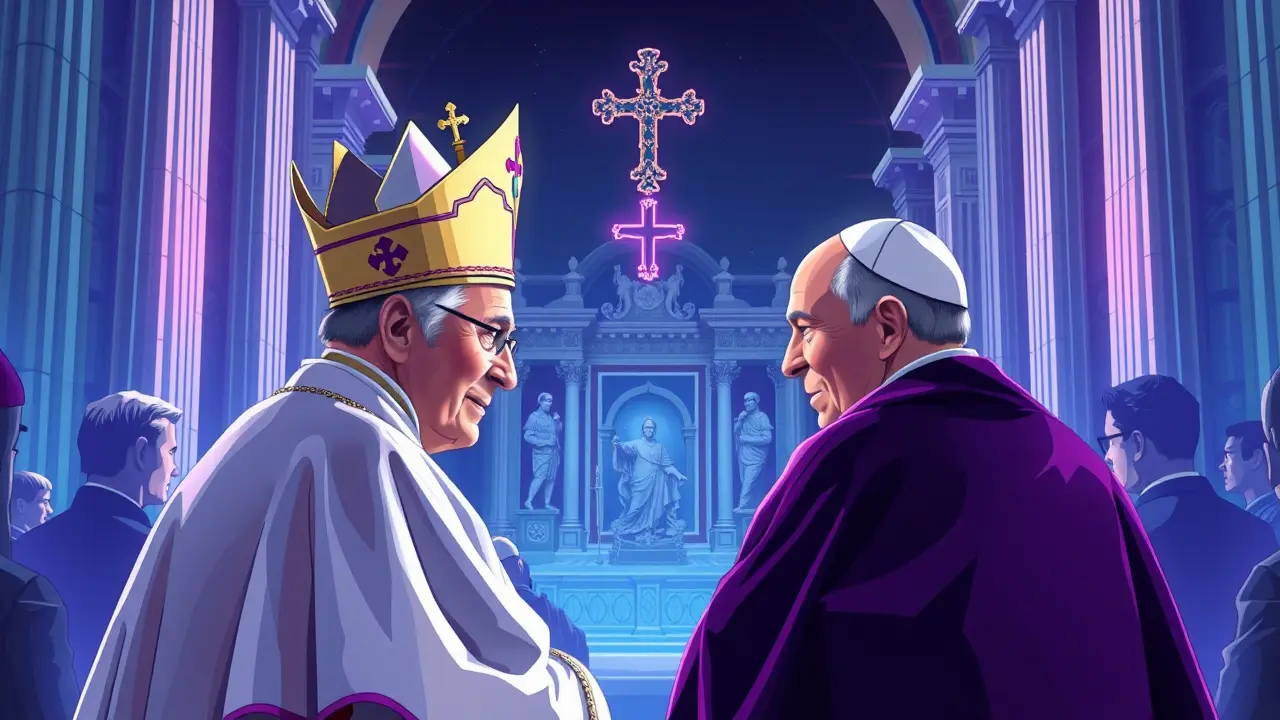King Charles and Pope Francis Hold Historic Joint Prayer Service.
In a moment of profound historical resonance, the centuries-old schism between the Catholic Church and the Church of England witnessed a monumental step toward reconciliation as Britain’s King Charles and Pope Francis convened for an unprecedented joint prayer service within the hallowed confines of the Sistine Chapel. This ecumenical gathering, scheduled for October 23rd and rooted in a shared theological commitment to the stewardship of God’s creation, represents the first instance since the turbulent era of the Reformation that the supreme leaders of these two great Christian traditions have engaged in unified prayer, an act that would have been unthinkable to the monarchs and pontiffs who defined half a millennium of doctrinal conflict and political rivalry.The path to this chapel has been paved by the slow, deliberate work of modern ecumenism, a diplomatic and theological endeavor that gained significant momentum following the Second Vatican Council's *Unitatis Redintegratio* decree in 1964, which formally opened the door to dialogue with other Christian communities. Yet, the ghost of King Henry VIII’s break with Rome in the 1530s, an act born of dynastic necessity that spiraled into a fundamental reordering of English society and faith, has long cast a shadow over any prospect of such visible unity.The very venue of the Sistine Chapel, with Michelangelo’s ‘The Last Judgment’ looming overhead, serves as a powerful metaphor for the judgment of history upon this encounter, challenging both institutions to transcend a past marred by mutual excommunications and the bloody aftermath of the English Reformation. Analysts of inter-church relations, such as Dr.Eleanor Vance of Oxford’s Centre for Ecclesiastical History, suggest that the choice of ‘care for creation’ as the thematic cornerstone is a masterstroke of strategic diplomacy; it is a theologically safe, yet morally urgent, platform that allows both leaders to leverage their respective bully pulpits without immediately confronting the more intractable dogmatic divides that persist, such as the ordination of women and the nature of apostolic succession. For King Charles, a monarch whose long-held interest in environmentalism and interfaith dialogue is well-documented, this event provides a pivotal opportunity to define his reign not merely as a continuation of tradition but as a bridge-builder for the 21st century, subtly repositioning the Crown’s relationship with global spiritual authority.For Pope Francis, whose papacy has been characterized by a pastoral focus on planetary ethics as outlined in his encyclical *Laudato Si'*, the collaboration reinforces his vision of a church engaged in practical solidarity with all people of goodwill, even as it navigates complex internal tensions. The geopolitical undertones cannot be ignored; in a world increasingly fractured by nationalism and secularism, the symbolic power of two ancient institutions, representing over 1.5 billion Christians collectively, standing together on a universal human concern sends a potent message to world capitals about the enduring role of faith in public life. However, the road ahead remains fraught with theological complexity.The Church of England’s synodical decisions, particularly regarding female bishops and same-sex marriage, continue to represent significant obstacles to full communion, and conservative factions within both communions will undoubtedly view this prayer service with deep suspicion, fearing a dilution of doctrinal purity for the sake of political spectacle. The event echoes, albeit in a more controlled setting, the historic 1965 meeting between Pope Paul VI and Archbishop of Canterbury Michael Ramsey, which led to the establishment of the Anglican-Roman Catholic International Commission (ARCIC), yet the progress since has been incremental rather than revolutionary.The ultimate consequence of this Sistine Chapel service may not be a sudden healing of the Reformation’s wounds, but rather a crucial recalibration of the relationship from one of competition to one of strategic partnership on global issues, setting a precedent for future cooperation that could, over generations, make the once-unimaginable seem inevitable. As Buckingham Palace and the Holy See issue their coordinated statements, the world watches a piece of living history unfold, a carefully choreographed moment that holds within it the echoes of centuries of division and the fragile, yet palpable, hope for a new chapter in Christian witness.
It’s quiet here...Start the conversation by leaving the first comment.
